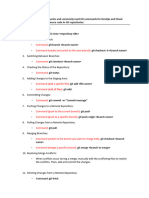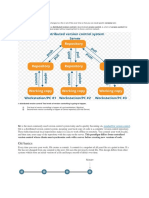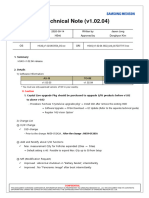0% found this document useful (0 votes)
12 views5 pagesGit Notes
This document is a comprehensive guide to Git, covering its purpose as a version control system, setup instructions, and commands for managing repositories, branches, and changes. It includes practical examples for initializing repositories, checking status, tracking changes, merging, stashing, and working with remotes. Additionally, it addresses advanced topics such as rebasing, cherry-picking, and ignoring files.
Uploaded by
Tushar KunwarCopyright
© © All Rights Reserved
We take content rights seriously. If you suspect this is your content, claim it here.
Available Formats
Download as PDF, TXT or read online on Scribd
0% found this document useful (0 votes)
12 views5 pagesGit Notes
This document is a comprehensive guide to Git, covering its purpose as a version control system, setup instructions, and commands for managing repositories, branches, and changes. It includes practical examples for initializing repositories, checking status, tracking changes, merging, stashing, and working with remotes. Additionally, it addresses advanced topics such as rebasing, cherry-picking, and ignoring files.
Uploaded by
Tushar KunwarCopyright
© © All Rights Reserved
We take content rights seriously. If you suspect this is your content, claim it here.
Available Formats
Download as PDF, TXT or read online on Scribd
/ 5





















































































